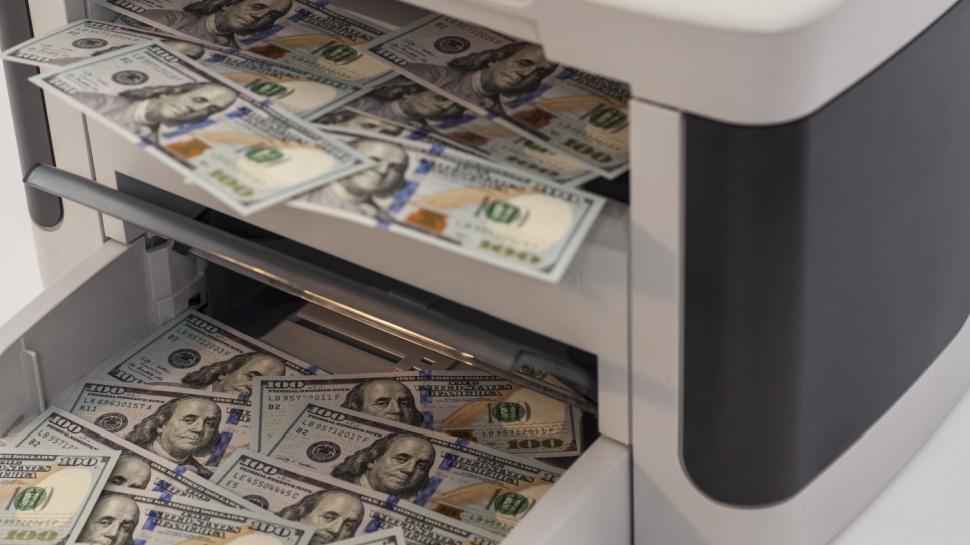I researched 100 ink cartridges and, at almost $10,000 per litre, this very popular HP cartridge is the most expensive in the world
Cost less than $20 per cartridge but remains “very expensive”

After researching 100 ink cartridges across some of the best printer brands, I discovered a shocking fact: the HP 65 Tri-Colour ink cartridge is one of the most expensive inks in the world, costing a staggering $9,995 per litre.
Despite its modest price tag of just $19.99 per cartridge, the cost efficiency of this ink is far from ideal.
Here is a breakdown of the reasons why this HP printer cartridge may feel cheap when purchased but can turn out to be one of the priciest investments for regular users.
The illusion of affordability - cheap but expensive
For only $19.99, you can replace the HP 65 Tri-Colour ink cartridge and continue printing. But here’s the catch: that $19.99 only provides 2ml of ink, just enough ink to print around 100 pages. While 100 pages may sound reasonable, when you do the math, you realize that for every 1,000 pages, you’ll have spent $200 on ink cartridges. And if you were to use a litre of this ink, the total cost would come close to $10,000! What initially seems like an affordable product is, in fact, one of the most expensive items you could purchase for your printer over the long term.
Now, let’s compare this with what other ink options offer. Take, for instance, the Epson T850, which sells for $71 for an 80ml cartridge and can print up to 850 pages. With this printer, the cost of printing 1,000 pages would be just under $85—significantly lower than what you would pay using the HP 65. Another example is the Brother LC75C, which sells for $15.49 for a 12ml cartridge and can print 600 pages. In the long run, for 1,000 pages, you'd spend only around $25.82.
Why is the HP 65 Tri-Colour ink cartridge so expensive? The answer lies in printer economics. Printer manufacturers like HP sell their printers at competitive prices but recoup their profits by selling high-margin ink cartridges. For instance, printers compatible with the HP 65 Tri-Color ink cartridge, such as the HP DeskJet 3755 or HP Envy 5055, are often very affordable. However, once users purchase these budget-friendly printers, they’re tied to the high cost of replacement cartridges like the HP 65. This model ensures that while the printer itself is cheap, the long-term cost of printing is anything but cheap.
For anyone who prints a reasonable volume of documents or images, ink tank printers are a far better solution. Ink tanks offer significantly lower costs per page and allow you to print thousands of pages before needing a refill. Unlike traditional cartridges that hold a small amount of ink, ink tanks are designed for volume printing and provide a much better total cost of ownership over time.
Are you a pro? Subscribe to our newsletter
Sign up to the TechRadar Pro newsletter to get all the top news, opinion, features and guidance your business needs to succeed!
The shelf price of an ink cartridge is not all you should look at when shopping for one. To choose the right ink for your printer, it’s important to consider the total cost of ownership based on how many pages you’ll be printing. For instance, looking at how much it costs to print 1,000 pages can give you a clearer idea of the long-term expenses involved.
With HP's traditional cartridge models, like the HP 65 or HP 67, you could easily spend hundreds or even thousands of dollars to meet your printing needs. But with an ink tank printer, you’ll save significantly, as refilling the ink costs just a fraction of the price per page.
More from TechRadar Pro
- These are the best all-in-one printers
- Adobe unveils new AI-powered app for marketing teams
- Take a look at our guide to the best small business printers

Efosa has been writing about technology for over 7 years, initially driven by curiosity but now fueled by a strong passion for the field. He holds both a Master's and a PhD in sciences, which provided him with a solid foundation in analytical thinking. Efosa developed a keen interest in technology policy, specifically exploring the intersection of privacy, security, and politics. His research delves into how technological advancements influence regulatory frameworks and societal norms, particularly concerning data protection and cybersecurity. Upon joining TechRadar Pro, in addition to privacy and technology policy, he is also focused on B2B security products. Efosa can be contacted at this email: udinmwenefosa@gmail.com